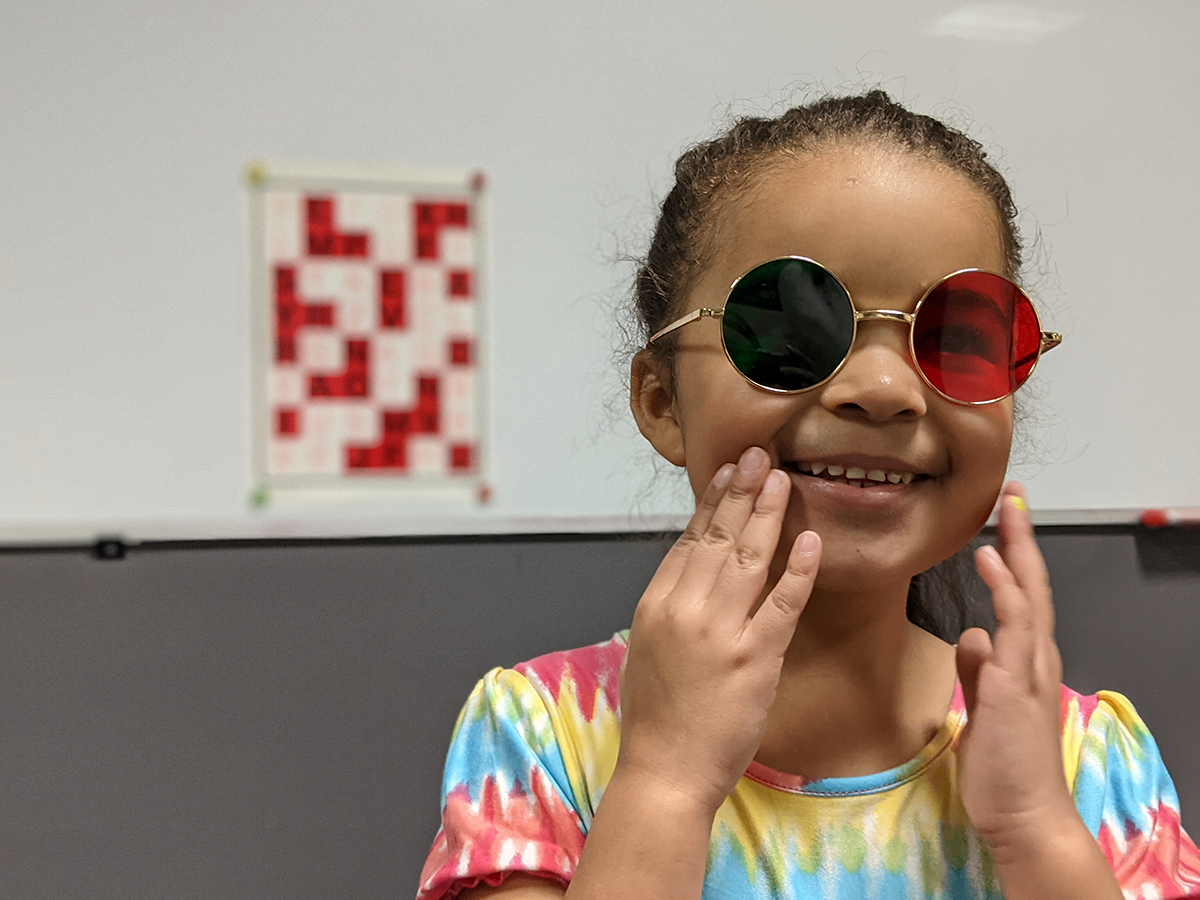The apparatus for this exercise specifies use of a chalkboard. As these are hard to find and any smooth writing surface may be used (i.e. you might put sheets of white paper on a wall, or use a whiteboard with dry erase markers). While it is best to actually trace visible lines, sometimes it is difficult to find a suitable large writing surface to put on a wall; you can simply have the child trace circles on a blank wall with his fingers. Be aware of whether you are leaving marks on your wall and modify your approach to ensure you are not damaging your wall.
Loading the activity: See steps 8 and 9. You can also consider using a metronome to speed up the action. It’s important that you begin at a pace that is easy for the child to succeed with, then have them select a new pace that is more challenging.
HARMON CIRCLES–MOTOR EQUIVALENTS
PURPOSE: To organize equivalency of motor patterns around midline with peripheral visual monitoring.
APPARATUS: Chalkboard, chalk
METHOD:
Patient is to complete the following:
1. With elbows tucked in at sides and forearms parallel to floor, approach chalkboard and stop when hands touch it. This is your proper distance from chalkboard.
2. Place X on chalkboard at nose level.
3. Stand in slight straddle facing chalkboard centered on the X.
4. Keep looking at the X throughout this exercise.
5. Raise hands to eye level, but comfortably extended and make circles in the following sequence:
First: Inward
Second: Outward
Third: To Right
Fourth: To Left
6. Do not go to the third and fourth until the first and second are done smoothly.
7. Repeat at hair line level and at waist level. At waist level, work with palms up, whereas at other two levels, work with palms down.
8. Now drop out one hand at a time, letting the hand dropped out move a little in support of the action hand.
9. Then bring that hand back into the action without disrupting the action of the other hand.
ASPECTS TO BE EMPHASIZED:
1. Ability to shift smoothly from any one of the four bilateral movement phases to another.
2. Ability to maintain visual fixation on the X throughout.
3. Ability to perform at eye, head or waist level.
4. Ability to drop out and feed in right or left hand.
MONOCULAR_BINOCULAR_SEPTUM_LENSES_TIME_





